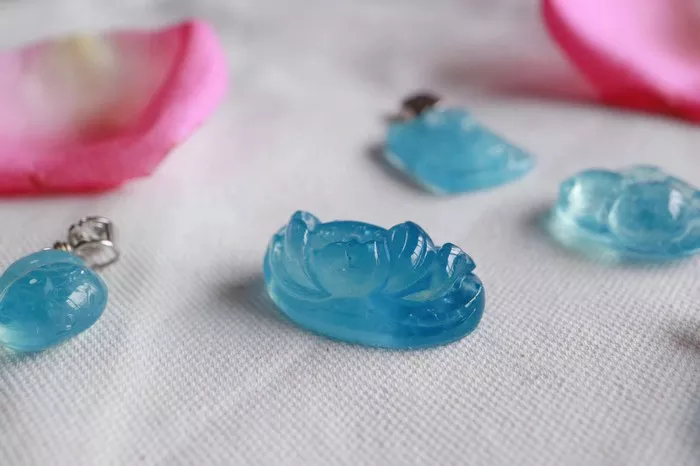Aquamarine, with its mesmerizing blue hues reminiscent of serene ocean waters, is a gemstone that exudes elegance and charm. Its captivating beauty often leads to the perception that aquamarine comes with a hefty price tag. But what makes aquamarine so expensive? In this article, we will explore the various factors that contribute to the high value of aquamarine gemstones. From rarity and color to size and quality, we will delve into the intricate world of aquamarine pricing and reveal why it is considered a precious and sought-after gemstone.
Rarity and Limited Availability
One of the primary factors that contribute to the high price of aquamarine is its rarity. While aquamarine is not as rare as some other gemstones, such as emerald or ruby, finding high-quality aquamarine in significant sizes can be challenging. Aquamarine is typically found in pegmatite veins and granite rocks, which require specific geological conditions for their formation.
Aquamarine deposits are scattered across the globe, with notable sources including Brazil, Madagascar, Pakistan, and Nigeria, among others. However, the occurrence of exceptional aquamarine gemstones is relatively limited. The combination of limited availability and the demand for aquamarine contributes to its higher price point.
Color and Clarity
The color and clarity of an aquamarine play a crucial role in determining its value. The most valuable and sought-after aquamarines exhibit a vivid and intense blue color that is reminiscent of the clearest ocean waters. The color should be pure and free from any noticeable green or gray undertones.
In addition to color, clarity is another essential factor in evaluating aquamarine quality. Gemstones with higher clarity, meaning they have fewer visible inclusions or internal flaws, are considered more valuable. Clarity is evaluated using a grading system, with “eye-clean” stones (no visible inclusions to the naked eye) commanding higher prices.
It’s important to note that aquamarine can have natural inclusions, which are often referred to as “garden” due to their resemblance to underwater plant life. These inclusions can add character and uniqueness to the gemstone, but excessive inclusions or ones that affect the stone’s transparency can lower its value.
Cut and Carat Weight
The cut and carat weight of an aquamarine also impact its price. A well-executed cut can maximize the gemstone’s beauty, brilliance, and light reflection, making it more desirable. The choice of cut, such as oval, emerald, or pear-shaped, can also influence the gemstone’s price.
Carat weight refers to the size and weight of the aquamarine gemstone. Larger aquamarines are generally rarer and more valuable. However, it’s important to consider that aquamarines come in a wide range of sizes, and smaller gemstones with exceptional color, clarity, and cut can still command significant value.
Origin and Market Demand
The origin of an aquamarine can also affect its price. Certain regions are known for producing aquamarines with specific characteristics that are highly valued in the market. For example, aquamarines from Brazil, particularly those from the state of Minas Gerais, are renowned for their intense blue color and excellent clarity. The origin of the gemstone can add to its allure and influence its price.
Market demand is another crucial factor in determining the price of aquamarine. Trends, preferences, and market dynamics play a significant role in the value of gemstones. If there is high demand and limited supply for specific qualities of aquamarine, the price is likely to increase. Conversely, if the demand is low or there is an abundance of lower-quality aquamarine in the market, the price may be lower.
Treatment and Enhancement
The treatment and enhancement of aquamarine can also impact its price. While aquamarine is often found in its natural state, certain treatments may be applied to enhance its color or clarity. The most common treatment for aquamarine is heat treatment, which can improve its color and remove undesirable tones. Heat-treated aquamarines are generally accepted in the industry, and the treatment does not significantly diminish their value.
However, it’s important to note that undisclosed treatments or enhancements can lower the value of an aquamarine. Transparency and proper disclosure of any treatments or enhancements are crucial to maintaining the gemstone’s value and integrity.
Branding and Jewelry Design
The branding and reputation of the jewelry brand or designer can also influence the price of aquamarine pieces. Well-established brands with a history of craftsmanship, innovation, and exclusivity may command higher prices for their aquamarine jewelry. Additionally, unique and intricate designs, especially those incorporating rare or high-quality aquamarines, can increase the value of the jewelry.
Conclusion
Aquamarine’s expensive nature can be attributed to a combination of factors. Its rarity, limited availability, and the demand for high-quality gemstones contribute to its higher price point. Factors such as color, clarity, cut, carat weight, origin, and market demand further influence the value of aquamarine. Treatments and enhancements, when properly disclosed, can also affect the gemstone’s price.
Ultimately, the beauty, allure, and desirability of aquamarine make it a gemstone worth the investment. Its captivating blue hues and unique properties set it apart as a gemstone of elegance and sophistication. Whether adorning jewelry or admired in its natural form, aquamarine continues to hold its value as a precious and sought-after gemstone.


